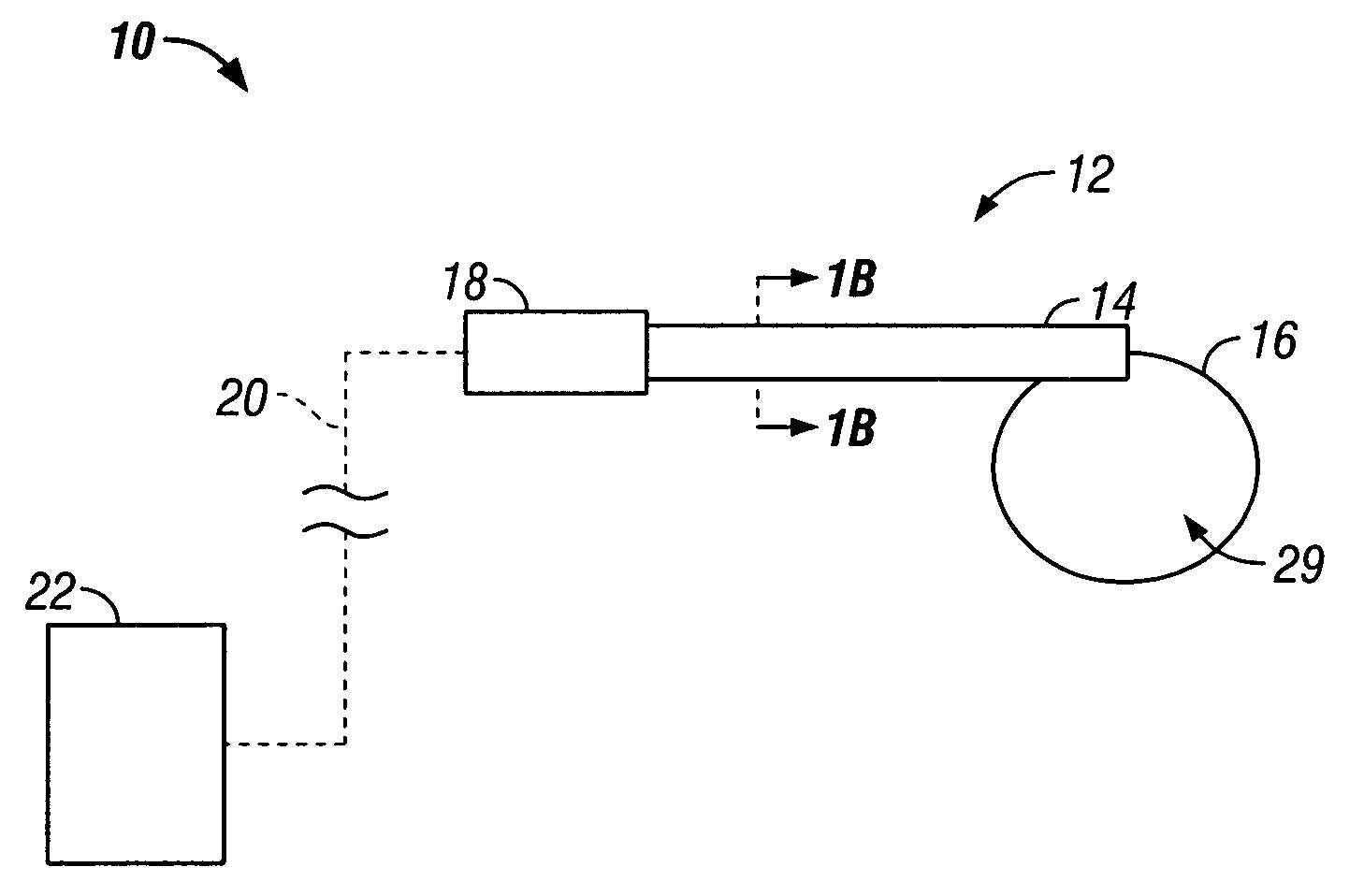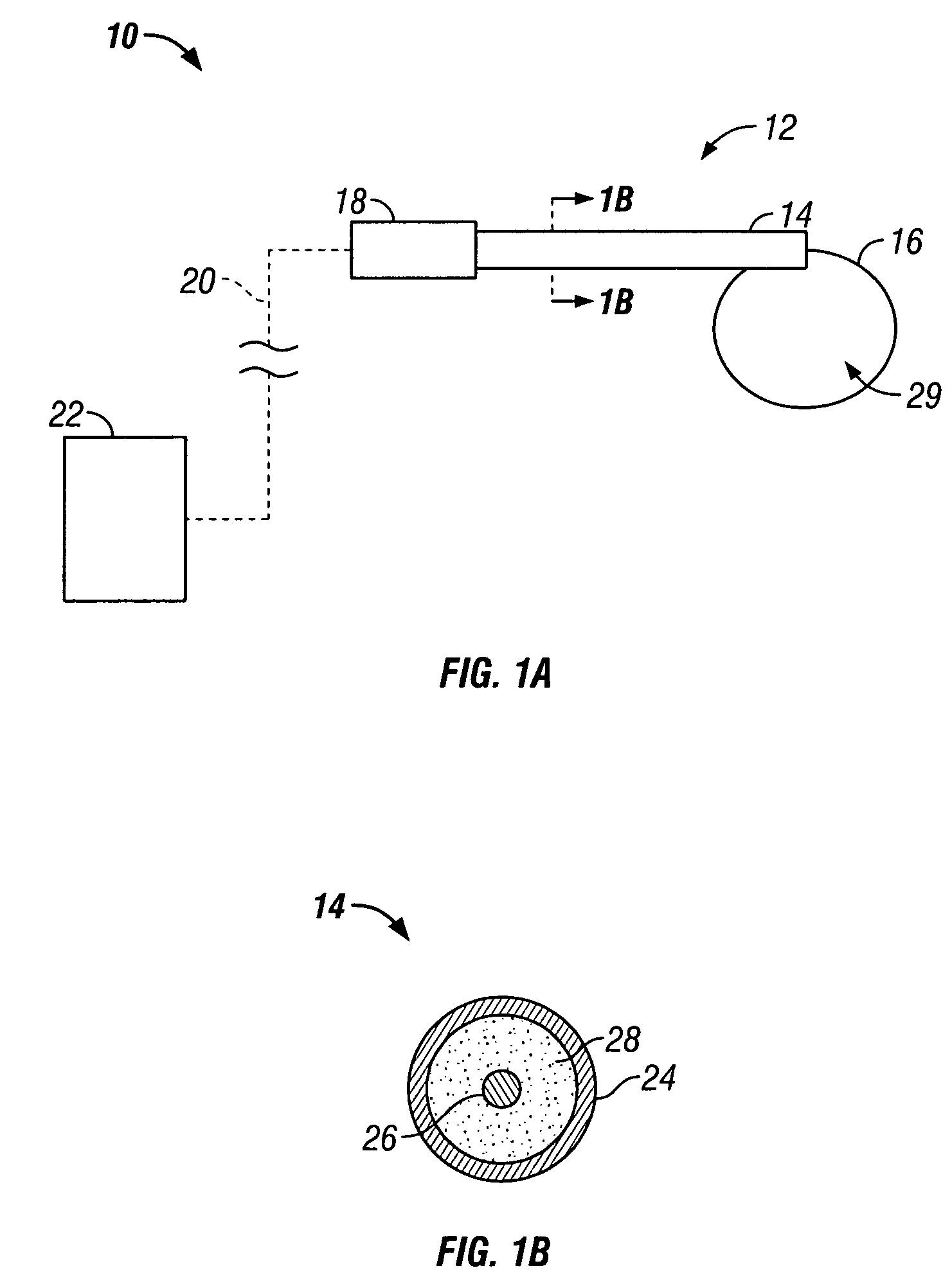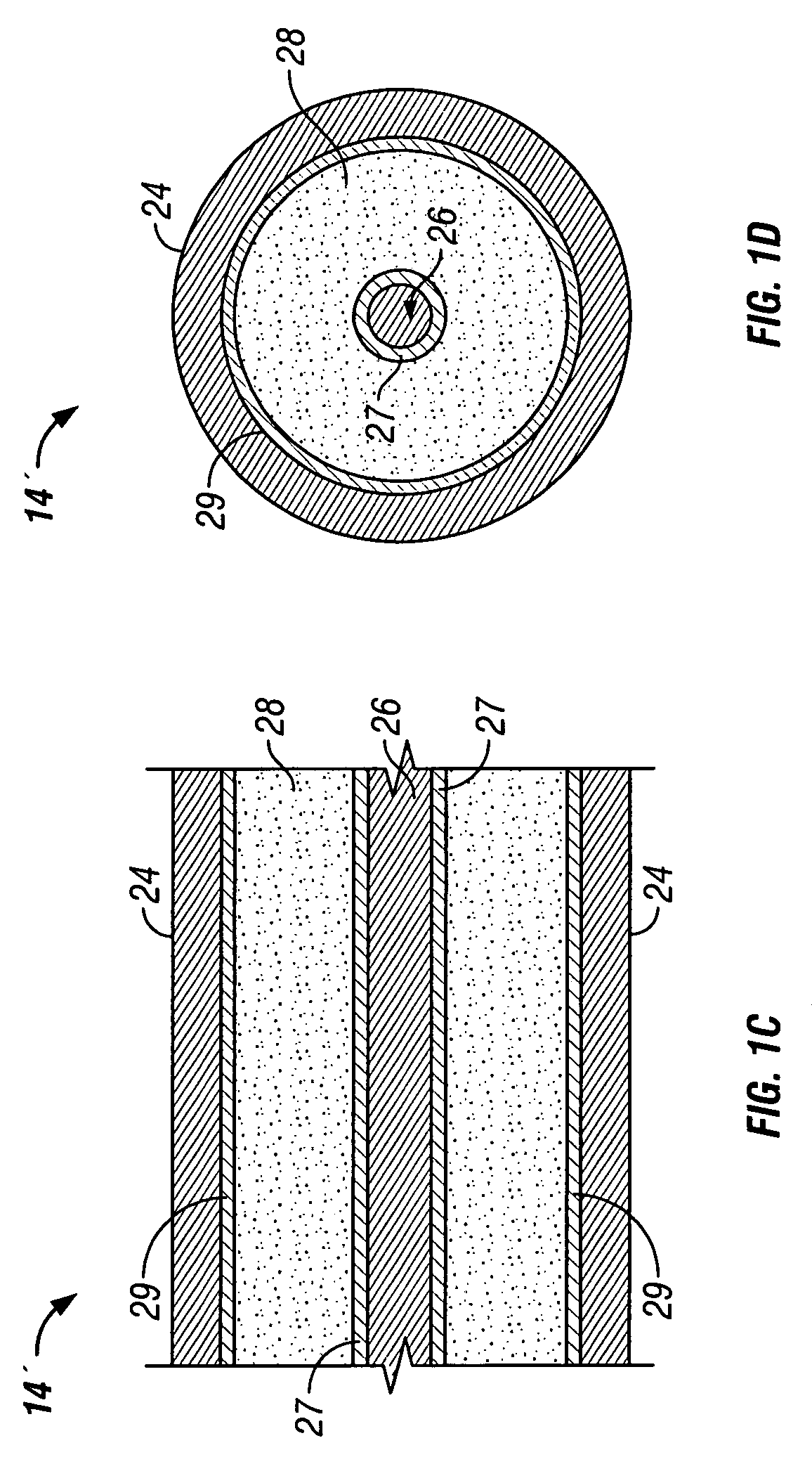Microwave antenna having a curved configuration
a microwave antenna and configuration technology, applied in the field of microwave antenna probes, can solve the problems of unwanted heating of healthy tissue, uncontrollable non-invasive use of microwave energy, and the inability of antenna probes to provide uniform heating axially and/or radially about the effective length of the probe, so as to prevent tissue from sticking to the antenna
- Summary
- Abstract
- Description
- Claims
- Application Information
AI Technical Summary
Benefits of technology
Problems solved by technology
Method used
Image
Examples
Embodiment Construction
[0060]Microwave ablation devices typically ablate the tissue surrounding the antenna. The present invention clearly defines an ablation region by having the microwave antenna surround at least a majority of the tissue to be ablated without the need to actually penetrate or contact the ablated tissue. Furthermore, the curved microwave antenna allows for the direct control over the outer extent of the thermal lesion created by the device. FIG. 1A shows one variation in microwave antenna assembly 10 which preferably comprises at least microwave antenna 12 electrically connected to generator 22. Microwave antenna 12 preferably comprises shaft or feedline 14 with a distal end from which antenna or inner conductor 16 extends to define the ablation region 29, which is described in detail below. The proximal end of feedline 14 preferably comprises coupler 18 which electrically couples the antenna 12 to generator 22 via power transmission cable 20. The cable 20 is preferably a flexible cable...
PUM
 Login to View More
Login to View More Abstract
Description
Claims
Application Information
 Login to View More
Login to View More - R&D
- Intellectual Property
- Life Sciences
- Materials
- Tech Scout
- Unparalleled Data Quality
- Higher Quality Content
- 60% Fewer Hallucinations
Browse by: Latest US Patents, China's latest patents, Technical Efficacy Thesaurus, Application Domain, Technology Topic, Popular Technical Reports.
© 2025 PatSnap. All rights reserved.Legal|Privacy policy|Modern Slavery Act Transparency Statement|Sitemap|About US| Contact US: help@patsnap.com



